Do you have a question about the Panasonic KX-NT346 and is the answer not in the manual?
Lists optional devices and features supported by the IP Proprietary Telephone.
Details the PBX versions compatible with the IP Proprietary Telephone.
Identifies and describes the main controls and the LCD display on the telephone.
Explains the function of various secondary buttons, keys, and indicator lamps.
Guides on adjusting speaker, handset, and ringer volumes, and setting ring tones.
Explains how to adjust LCD contrast and backlight levels for optimal viewing.
Covers making calls, redialing, quick dialing, one-touch dialing, and personal speed dialing.
Details call hold, call transfer, and multiple party conversation (conference) functions.
Instructions for activating Do Not Disturb and setting timed reminders.
Explains how to set up various call forwarding scenarios.
Guides on listening to messages from own or others' extensions.
Instructions for leaving messages and setting delivery times.
How to access directories and call logs using the LCD screen.
Method for entering alphabetic characters and digits using the keypad.
Explains the 12 flexible buttons and 4 pages for custom labeling.
How to assign names to flexible buttons via programming.
Procedure for storing one-touch dialing buttons with custom text.
Steps to set the contrast levels for the Self Labeling LCD display.
Instructions on how to set the angle of the operation board.
Procedure for securing the handset when wall-mounted or at a high angle.
Details on connecting Ethernet cables to PC/Hub and AC adapter.
Cautions regarding the selection and connection of Ethernet and headset cables.
Steps for removing adaptor and securing cables before wall mounting.
Instructions for driving screws and mounting the unit securely on the wall.
Step-by-step guide for installing the KX-NT303 add-on key module.
Step-by-step guide for installing the KX-NT305 add-on key module.
Advice on proper unit operation, handling, and environmental considerations.
Essential safety instructions for preventing fire, electric shock, and injury.
Guidelines on unit placement, warnings, and important operational notices.
Instructions for shipping the product for repair and locating service centers.
A detailed list of safety precautions for using the telephone unit.
Guidance on when to unplug the unit and when qualified service is needed.
Information regarding FCC requirements and handling radio frequency interference.
Guidelines for programming and testing emergency numbers.
FCC Part 68 compliance details and contact information for service.
Information on the telephone's magnetic coupling for hearing aids.
Lists optional devices and features supported by the IP Proprietary Telephone.
Details the PBX versions compatible with the IP Proprietary Telephone.
Identifies and describes the main controls and the LCD display on the telephone.
Explains the function of various secondary buttons, keys, and indicator lamps.
Guides on adjusting speaker, handset, and ringer volumes, and setting ring tones.
Explains how to adjust LCD contrast and backlight levels for optimal viewing.
Covers making calls, redialing, quick dialing, one-touch dialing, and personal speed dialing.
Details call hold, call transfer, and multiple party conversation (conference) functions.
Instructions for activating Do Not Disturb and setting timed reminders.
Explains how to set up various call forwarding scenarios.
Guides on listening to messages from own or others' extensions.
Instructions for leaving messages and setting delivery times.
How to access directories and call logs using the LCD screen.
Method for entering alphabetic characters and digits using the keypad.
Explains the 12 flexible buttons and 4 pages for custom labeling.
How to assign names to flexible buttons via programming.
Procedure for storing one-touch dialing buttons with custom text.
Steps to set the contrast levels for the Self Labeling LCD display.
Instructions on how to set the angle of the operation board.
Procedure for securing the handset when wall-mounted or at a high angle.
Details on connecting Ethernet cables to PC/Hub and AC adapter.
Cautions regarding the selection and connection of Ethernet and headset cables.
Steps for removing adaptor and securing cables before wall mounting.
Instructions for driving screws and mounting the unit securely on the wall.
Step-by-step guide for installing the KX-NT303 add-on key module.
Step-by-step guide for installing the KX-NT305 add-on key module.
Advice on proper unit operation, handling, and environmental considerations.
Essential safety instructions for preventing fire, electric shock, and injury.
Guidelines on unit placement, warnings, and important operational notices.
Instructions for shipping the product for repair and locating service centers.
A detailed list of safety precautions for using the telephone unit.
Guidance on when to unplug the unit and when qualified service is needed.
Information regarding FCC requirements and handling radio frequency interference.
Guidelines for programming and testing emergency numbers.
FCC Part 68 compliance details and contact information for service.
Information on the telephone's magnetic coupling for hearing aids.
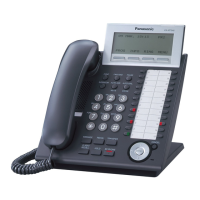
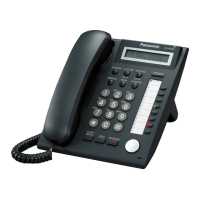

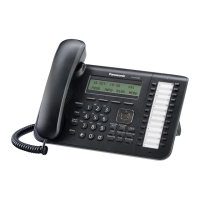
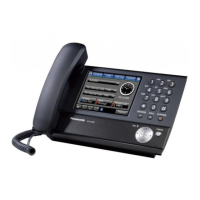
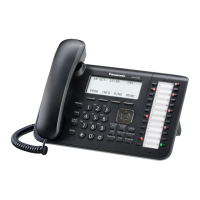
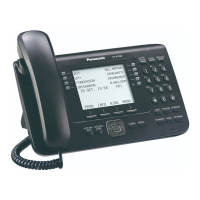
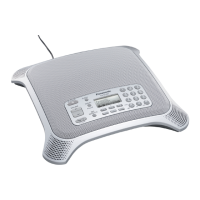
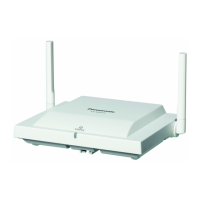

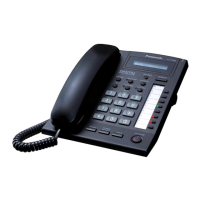
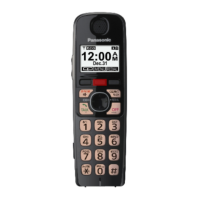
